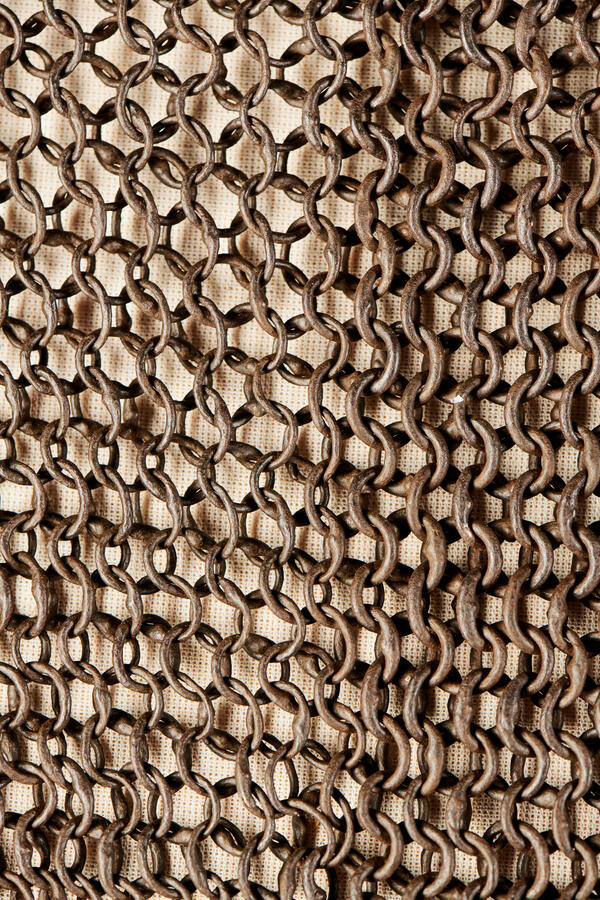Chain mail, or ringed armor, is a type of protective gear in the form of a shirt. It was intended for protection against throwing and cold weapons. It was woven mainly from iron wire rings. As a rule, chain mail was single-layered, with double weaving sometimes used only in the most vulnerable places.
Chain mail was made with sleeves of various lengths and without sleeves, waist-length and knee-length. In order to reduce chafing, it was often worn over thick clothes made of leather or felt, quilted in several layers or stuffed with absorbent cotton, hemp or bristles.
Chain mail provided quite reliable protection from the cutting blows of a saber and protected well enough from the blows of a sword or ax. However, it did not protect well from strong blows with crushing weapons: even if it did not tear the ringed fabric, they caused serious damage to internal organs. Nor did it save from strong stabbing blows with a sword, or from direct blows with a spear. It also did not provide reliable protection from archery and crossbow bolt at an aiming distance of 50 to 75 meters.
This exhibit came to the Kamchatka Regional United Museum in 1975. It was brought from Penzhinsky district of Kamchatka region by Valery Petrovich Martynenko (1940–2000), a journalist, local historian and writer. The chain mail was kept in a Koryak family and passed from father to son as an ancestral relic.
The weight of this protective individual armor was 12 kilograms. The chain mail had short sleeves, 12 centimeters long and 20 centimeters wide. A local 17th-century craftsman made technical slits on the item. One, 30 centimeters long, was located on the chest from the front, and two others, 13 centimeters each, were located down the center, front and back.
The chain mail was made entirely of iron wire rings, slightly flattened in cross-section. Each of the rings was not round, but slightly elongated, oval in shape. All the rings had similar dimensions: seven millimeters in length and one centimeter in width along the inner edge. The diameter of the wire varied: from 0.5 to 0.7 millimeters on the edges of the sleeves to 1.5–1.8 millimeters on the chest and shoulders, where the major blows could be delivered.
There are many breaches
with the loss of one or more rings all over the chain mail. There are 43
breaches on the front side and 32 on the back side. Most of the gaps are
missing from two to four rings, but there are also larger and smaller gaps.




